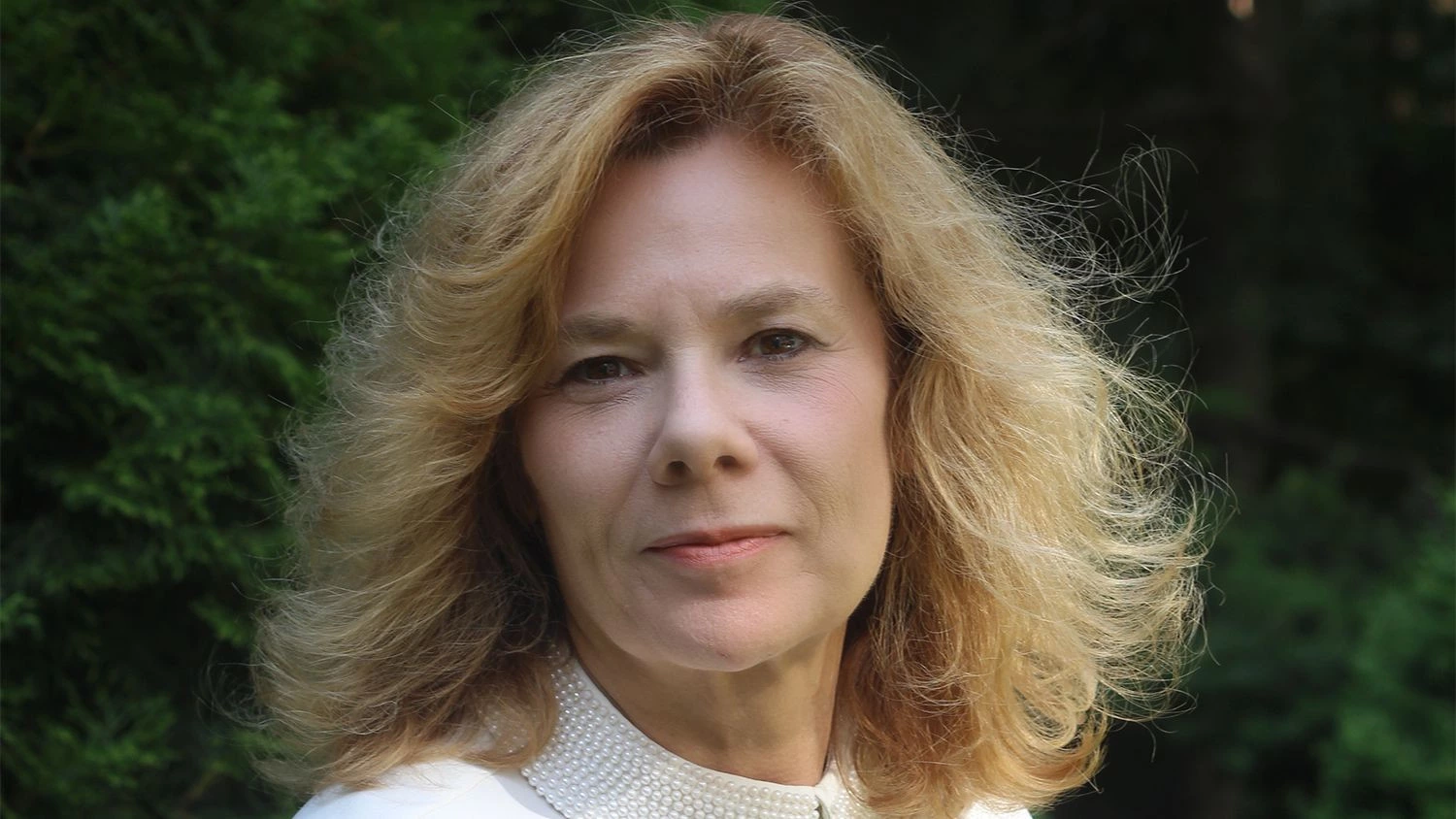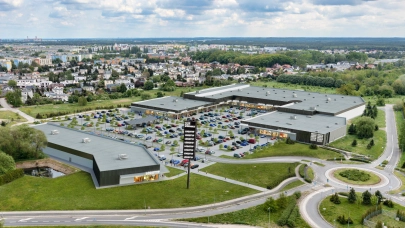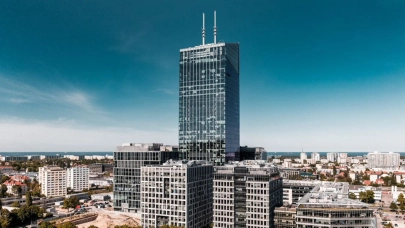
What exactly is the circular economy in real estate and why it is so important? Why do impact investments make a real difference? Monika A. Dębska-Pastakia, Founder and Managing Partner of PADMO Group and renowned real estate expert explains it for Property Forum in detail.
The circular economy seems to be a new topic in the commercial real estate market not only in Poland but in the CEE region as a whole. How much work do we have to do to catch up with the more mature markets of Western Europe?
Circular economy as a system has been around for a long time although this wording did not exist as such in the public domain until recently. In Europe, it was defined in the 1970s by Walter Stahel, a Swiss architect who first described the concept of circular economy 40 years ago. One of my gurus in the circular economy, Ellen MacArthur, has been leading the circular movement since 2009 when she set up the Ellen MacArthur Foundation, a charity dedicated to promoting the global transition from the linear (make-take-waste) economy to the circular one. The Foundation defined circular economy as “one that is restorative and regenerative by design and aims to keep products, components, and materials at their highest utility and value at all times, distinguishing between technical and biological cycles.”
Looking at the circular economy application in real estate in Western Europe I can think of numerous examples in countries such as Holland, Denmark, France, Finland and Germany as well as the UK of the transformation of their economies to a circular one with the building and construction sectors being at the forefront. The Dutch property sector, in particular, has been advancing the transition rapidly and a prominent example of such transition is the city of Amsterdam which has recently achieved some 30% of circularity with the aim to become a fully circular city by 2050. There are numerous examples of circular or cradle-to-cradle principles being used in the Dutch built environment with buildings that have adopted the key circular economy business models such as product as a service or use extension, sharing economy concept or resource recovery. Some examples of circular buildings that I can think of include the Edge office building in Amsterdam, ABN-AMRO Bank’s Circle Pavilion also in Amsterdam, the Green House in Utrecht or Triodos Bank Nederlands in Zeist, the latter with timber construction, fully demountable and serving as a material bank with construction materials holding material passports. Another great example is a Triton office building in London Broadgate, first developed in the 1990s, that was partly decommissioned with the entire façade being upcycled as part of the retrofit project for British Land, representing one of the lowest carbon HQs in the UK. The Greenwich Millenium Village, designed and built with materials used as material banks, is fully demountable upon the end of the buildings’ useful life, creating property added value. The Olympic Stadium in London Stratford used 98% of demolition materials that were reused or recycled.
There is a growing awareness in the CEE of a shift towards the circular economy that is inevitably ahead of us hence a number of cities in the CEE region have already declared plans to become circular. Many architects and property professionals have also been calling for the design and implementation of innovative circular buildings and infrastructure but their delivery to the market in our region has been slow. Having said that there are examples of circular solutions in office buildings in Warsaw such as modular building components, upcycled office fit-outs, retrofits with life extended spaces but fully circular buildings are yet to be delivered.
The acceleration of the transformation to the circular economy in Europe is inevitable as the EU Sustainable Finance Green Taxonomy legislation that came into force in January this year will require the built environment to adopt the circular economy, business models.
What are the main obstacles to the circular economy in real estate in our region: old mentality, faulty legal framework or just a simply supply-and-demand game?
I can think of several limitations that come to mind but the most fundamental seems to relate to people’s mindsets and limited knowledge or awareness of the circular economy principles. Other relate to local legislation that will need to embrace this radical shift in the economic model, triggering changes in the built environment and related industries. Financial institutions and insurance companies have a higher risk approach to the adoption of circular buildings as securities in the context of mixed ownership structures incorporating freehold with numerous leased building layers. Moreover, the current property valuation and accounting methods do not embrace the circular business models to any degree although I have recently come across a proposal from the Dutch Coalition Circular Accounting to change the methods of accounting to incorporate building materials as material banks of residual value. Looking from the policy angle, any government incentives would advance the transition of the built environment into a new circular paradigm. In the meantime, local action groups and NGOs such as the Green Building Councils and our region have been at the forefront of involving local businesses and communities in bringing these changes closer to home.

Monika Dębska-Pastakia
Founder and Managing Partner
PADMO Group
Do you have a few examples of how companies are already implementing principles of circular economy?
Indeed, the first example of circularity application in real estate that comes to mind is product as a service. This idea was developed into Philips’ ‘Pay-per-lux’ model, pioneered in RAU Architects’ offices in Amsterdam and subsequently in Brummen Town Hall as well as the Shiphold Airport in Amsterdam. The Pay-per-lux model is a performance-based arrangement where Philips installs and maintains a lighting level and monitors the lighting performance and energy use online with annual reporting, health checks and preventative maintenance. Philips also pays the energy bills for the lighting, which gives them the incentive to provide the most efficient lighting system and to ensure that it is operating as well as possible.
Another example of the product as a service model is the Elevator as a Service, tried and tested by Mitsubishi, implemented by Delta Development Group at Park 20|20 in Hoofddorp, the Netherlands, the first full-service cradle-to-cradle office park in the world. In this new circular business model, the elevator is leased (full-service operational lease) instead of sold/bought, leaving the ownership of the product with Mitsubishi during the contract term.
There are also examples of leased building structures such as steel building frames leased to property owners on a long-term lease basis, also in the Netherlands. Closer to home, office and private rented residential sector (PRS) buildings’ owners can take advantage of a Fit-out as a Service, a business line recently developed by local service providers in Poland, whereby the entire office or PRS fit-out for tenants can be leased for the duration of the lease agreements. Upon the expiry of the tenants’ lease agreements, the fit-out components are returned to the producers or contractors for upcycling, repairs and re-use. A similar model applies to office and PRS furniture leased to tenants and repeatedly re-used, reducing waste and CO2 emissions.
I have been looking closely at the concept of building materials as material banks whereby buildings are constructed with materials that have material passports and can be re-used in other construction projects. Thomas Rau designed Brummen Town Hall in the Netherlands to be a ‘raw materials depot’, using the existing building and wrapping a new building extension around it with the idea that the extension could be disassembled and reused at the end of its useful life. The is to enable a radical waste reduction created by building demolition and replace it with a building decommissioning approach. The material passports are increasingly popular in Western Europe with several established digital platforms that register and store building materials’ parameters, circularity, carbon footprint and residual value. I have not come across similar solutions in our region, so we have some catching up to do, especially in the light of the planned EU material passports legislation.
The above closely relates to the product's life extension circular business model whereby the newly designed or retrofitted buildings are constructed with materials holding material passports that can be tracked down and easily identified using blockchain technology or dedicated digital platforms. The key to the product longevity in buildings is to design them for disassembly where parts can be reused, upcycled or recycled.
Utilising empty spaces under the sharing economy concept in vacant buildings also falls within the circular economy business models and there are numerous examples of various initiatives promoted by many European cities to bring vacant properties back into use. In our region, many city authorities have been actively involved in dedicated programmes to identify, stock-take and retrofit public empty spaces for sharing by the local community.
The benefits for the planet are obvious, but at the other end of the stick are the investors. What is their current stance on the circular economy in our region?
Most of the investors in our region are international investment funds that are well aware of the challenges related to the transition requirements from the linear to the circular economy. They also have to comply with the EU Sustainable Finance Taxonomy and the Corporate Social Responsibility Directive (CSRD) regulations, report on the circularity of their property portfolios as one of the six Taxonomy environmental objectives.
This new legislation will no doubt accelerate the shift towards the circular economy of the funds’ property portfolios that will require massive capital expenditure to align the existing building stock to circularity and net-zero carbon. It is but no means a quick fix and will require a great deal of collaboration, time and effort to make it happen.
The largest international funds operating in our region may have already revised and adopted their ESG policies including circularity for their portfolios to be implemented within a target time frame. This is in line with the expectations of their investors and financial institutions’ requirements.
Speaking of investors – the so-called ‘impact economy’ is another new topic in the public discussions over our property market…
Impact investment is generally associated with investing not only for financial returns but also for the benefit of the environment and society. The famous buzz words: People – Planet – Profit highlight the main driver behind impact investment.
Impact investing has clear objectives that need to meet environmental and/or social as well as financial returns criteria which are on the same footing as the financial objectives. It distinctly differs from the standard ESG integration into the investment process itself. The hallmarks of impact investment incorporate intentionality, developed right from the beginning of the investment process, additionality by way of a positive impact of the investment that would not have happened otherwise as well as the measurement and reporting of the impact delivery by the investment.
ESG issues in real estate tend to focus on environmental factors such as reducing carbon emissions, decarbonisation of construction and infrastructure, but we cannot forget about the social factors such as benefits to the community. The combined environmental and social factors focus on environmental impacts, diversity, meeting needs of small businesses and local communities, improved health and well-being. All buildings will need to be net-zero carbon by 2050 so impact investing can play a real role in driving that transformation to achieve net-zero buildings. The key factors in impact investing relate to scoring at the initial screening process for comparison with other investments hence properties that cannot achieve net-zero carbon or will be detrimental to the local community will not qualify. The typical impact investment sectors thus far have been housing, healthcare, education and life science parks primarily in Western Europe and the US.
The interest in impact investing is a growing trend and looks to be the focus for many investment funds and fund managers in the face of investors' expectations and the ESG legislation.
Could you please point out any pioneers of this kind of conscious investing in our area?
The move towards impact property investing has been resonating well in Western Europe with funds such as Black Rock that set up dedicated impact investment real estate funds. Another example is Nuveen, a newcomer in our region and one of the leading global asset managers with a focus on impact investment type of assets. Many international funds have already set up dedicated impact funds or are gathering pace to incorporate impact investment products with clear environmental and/or social objectives into their property portfolios. We have to watch the space for more impact investment funds to become active in our region and I have no doubt that this is only a matter of time.
How much time do we have left? Why changing the property market is so important in this climate change puzzle?
In the face of climate emergency, depleting natural resources, and growth in the world’s population the linear economic model is no longer sustainable. Natural resources are currently being consumed at twice the rate they are produced, competition for resources and severe disruptions to supply chains experienced during the Covid-19 pandemic and beyond are contributing to higher economic and financial risks.
As the built environment sector is a major consumer of natural resources amounting to some 45% globally and generates 30% of total greenhouse gas emissions and 30% of the global waste it is one of the larger contributors to climate change. At the same time, the property industry has an opportunity to shift to the circular economy model that offers the real estate sector to become more sustainable by using fewer resources, lowering environmental impacts and reducing the reliance on supply chains for natural resources. However, the transition process has been slow and it needs our undivided attention to embrace this inevitable change as time is of the essence.



